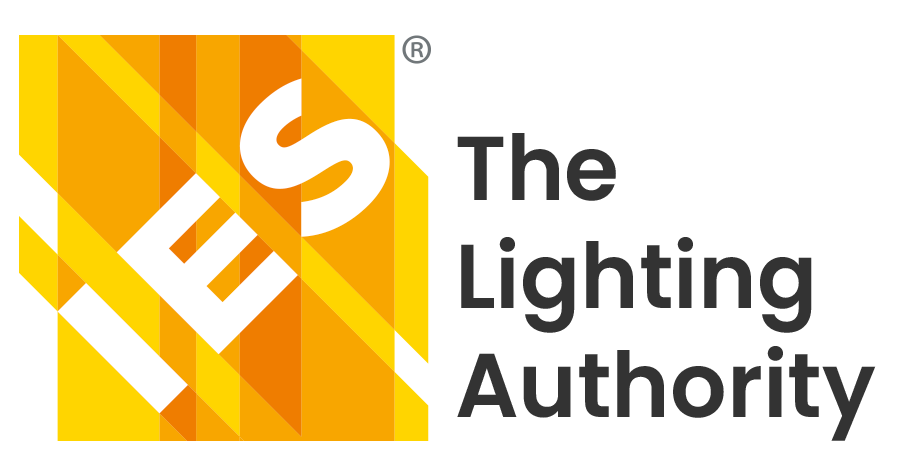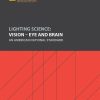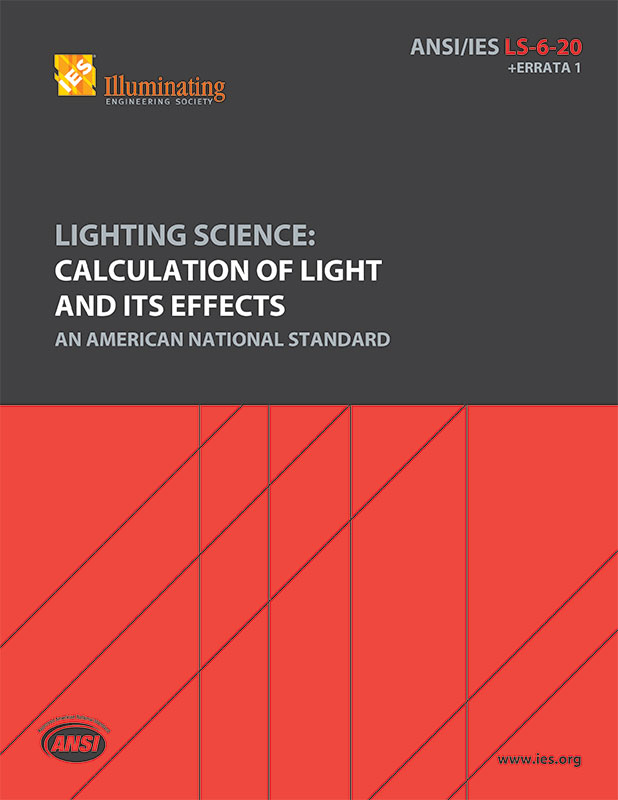Calculation of Light and Its Effects
$60.00
Member Price: $40.00
ANSI/IES LS-6-20+E1
Document Type: Lighting Science (LS)
Available as a downloadable secure PDF only.
To stay current with all IES standards, we recommend subscribing to the The Lighting Library as an Individual or through your company as a Sustaining Member.
In stock
Product Description
 Predicting the performance of a proposed lighting design is an integral part of the design process, allowing the designer to examine and compare alternatives, refine a promising idea, see whether applicable recommendations and codes will be met, evaluate energy conservation and lighting control opportunities, invoke standardized procedures to predict glare and visibility, and perhaps generate a rendering of how a space might appear. The purpose of this Lighting Science document is to provide the theoretical basis for lighting calculations, to describe how this theory is approximated and used, and to describe how it is embodied in most lighting analysis software. This can provide, from a user’s perspective, an understanding of the power and limitations of calculations—however performed—and thus make clear their use in the lighting design process. In addition, this document explains IES standard calculation procedures, including lumen method coefficients of utilization and glare assessment.
Predicting the performance of a proposed lighting design is an integral part of the design process, allowing the designer to examine and compare alternatives, refine a promising idea, see whether applicable recommendations and codes will be met, evaluate energy conservation and lighting control opportunities, invoke standardized procedures to predict glare and visibility, and perhaps generate a rendering of how a space might appear. The purpose of this Lighting Science document is to provide the theoretical basis for lighting calculations, to describe how this theory is approximated and used, and to describe how it is embodied in most lighting analysis software. This can provide, from a user’s perspective, an understanding of the power and limitations of calculations—however performed—and thus make clear their use in the lighting design process. In addition, this document explains IES standard calculation procedures, including lumen method coefficients of utilization and glare assessment.
Page count: 48 pages
Publisher: Illuminating Engineering Society (2020)
SKU: ANSI/IES LS-6-20+E1
ISBN-13: 978-0-87995-347-8
Chapters:
- 1.0 Introduction and Scope
2.0 The Role and Use of Lighting Calculations
3.0 Calculating Illuminance, Luminance, and Flux
4.0 Photometric Data for Calculations
5.0 Model of Light Transport
6.0 Renderings Based on Calculations
7.0 Evaluating Lighting Analysis Software
8.0 Factors Affecting Lighting Calculations: Light Loss Factors
9.0 Assessing Computed Results
10.0 Standardized Calculation Procedures
Annex A – Formulary
Annex B – Examples of Application of Radiative Transfer
Annex C – Comparison of Calculated and Measured Quantities
CONTENTS
- 1.0 Introduction and Scope
- 1.1 Introduction
- 1.2 Purpose and Scope
- 2.0 The Role and Use of Lighting Calculations
- 2.1 Analysis of Proposed Lighting Systems
- 2.2 Demonstration of Code Compliance
- 2.3 Assessment of Some Aspect of Design Quality
- 2.4 Design of Lighting Equipment
- 2.5 Education
- 3.0 Calculating Illuminance, Luminance, and Flux
- 3.1 Illuminance from Point Sources
- 3.2 Illuminance from Area Sources
- 3.3 Luminance at a Point
- 3.4 Flux on an Area
- 3.5 Approximations
- 3.6 Diffuse Surfaces
- 4.0 Photometric Data for Calculations
- 4.1 Luminaire Photometry for Calculations
- 4.2 Far‑Field Luminaire Photometry
- 4.3 Near‑Field Luminaire Photometry
- 4.4 Properties of Surfaces and Materials
4.4.1 Reflection
4.4.2 Transmittance - 5.0 Model of Light Transport
- 5.1 Direct Component Calculations
- 5.2 Interreflected Component Calculations
5.2.1 Radiative Transfer
5.2.2 Ray Tracing - 6.0 Renderings Based on Calculations
- 6.1 Overview of Rendering Generation
- 6.2 Computational Basis
6.2.1 Photometric Calculations
6.2.2 Radiometric Calculations
6.2.3 Radiative Transfer Calculations
6.2.4 Ray Tracing Calculations
6.2.5 Mixed Calculations - 6.3 Adding Realism to Renderings
- 6.4 Display Properties and Limitations
- 7.0 Evaluating Lighting Analysis Software
- 7.1 Analytic Tests
- 7.2 Measurement Tests
- 7.3 Testing Software
- 8.0 Factors Affecting Lighting Calculations: Light Loss Factors
- 9.0 Assessing Computed Results
- 9.1 Averages
- 9.2 Minimum and Maximum
- 9.3 Coefficient of Variation
- 9.4 Criterion Ratings
- 10.0 Standardized Calculation Procedures
- 10.1 Calculating Average Illuminance
10.1.1 Determining the CU: The Zonal Cavity Method
10.1.2 Effective Cavity Reflectances
10.1.3 Limitations - 10.2 Calculating Glare
10.2.1 Visual Comfort Probability
10.2.2 Unified Glare Rating - Annex A – Formulary
A.1 Calculating Configuration Factors
A.2 Calculating Form Factors
A.3 Calculating Lumen Method Coefficients of Utilization
A.4 Calculating Luminaire Spacing Criteria
A.5 Calculating Solid Angle
A.6 Calculating Luminaire Efficiency
A.7 Calculating Average Luminaire Luminance
A.8 Calculating Visual Comfort Probability (VCP) - Annex B – Examples of Application of Radiative Transfer
B.1 Implementation of the Flux Balance Model
B.2 Monte Carlo Ray Tracing - Annex C – Comparison of Calculated and Measured Quantities
- References


